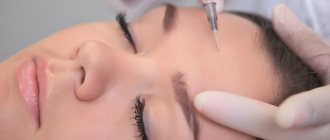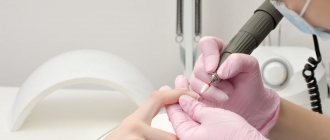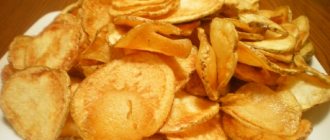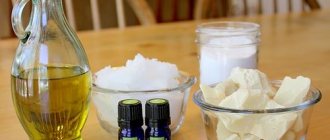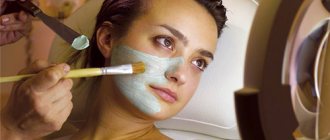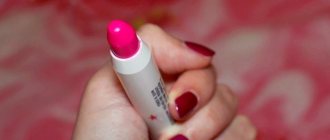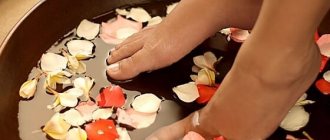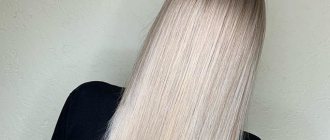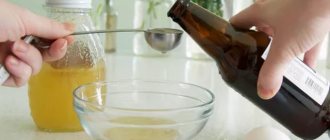Sugaring today is one of the most attractive methods of getting rid of unwanted hair. Firstly, it still seems new and fresh to many. Secondly, it is quite easy to carry. Thirdly, you don’t have to buy sugar paste for sugaring, because there is nothing easier than cooking it yourself at home. Very comfortably. Need waxing? 15-20 minutes and the product is ready. Effective, exciting, economical and you don’t have to go anywhere, because everything is at your fingertips. For those who made sugar candies in childhood, it will be quite simple. Sugaring paste is prepared in a similar way, with minor exceptions.
Some general information
For those new to sugaring, the question of what sugar paste should be requires clarification. Good means elastic. The quality of sugaring paste is assessed by the duration of its performance, that is, the time before it becomes clogged with hair and talcum powder. Another important point is tenacity. The shorter the hair the paste captures, the better. It is generally accepted that if a paste removes hair of 5 mm or more well, it can be called high-quality. Sugar pastes have different densities. At home, you can adjust the cooking time. Thick pastes are intended for removing thick shaved hair, soft pastes for thin fur.
Secrets and rules for preparing sweet depilatory composition
Now you know how to prepare sugaring at home and you can choose the recipe you like best. In order for the procedure to be comfortable and satisfying with the result, you must follow some rules on how to cook sugaring at home according to a recipe:
- Regardless of the chosen recipe, the product is cooked only over low heat;
- during cooking, constantly stir the mixture so that the sugar melts and does not burn;
- If the mass bubbles, immediately reduce the heat.
The cooking time for each sugar shugaring recipe at home is different and depends on the number of components taken.
To avoid problems during depilation, it is necessary to prepare sugaring at home correctly, in compliance with proportions and recommendations, the recipe for which can be chosen according to preferences.
Use the following recommendations that will help you prepare well for the procedure and teach you how to do sugaring at home according to a recipe:
- Before cooking, don’t be too lazy to watch the video recipe for sugaring at home again.
- buy fine-grained sugar, because it melts faster and the mixture will be more plastic;
- be sure to follow the specified proportions;
- The density of the composition can be adjusted using citric acid. A larger amount of lemon makes the composition softer;
- Use thick-bottomed containers for cooking ingredients.
Don’t be afraid to do sugaring at home according to the recipe, you will succeed if you follow the proportions and depilation technology.
Classic recipe for sugar paste for sugaring at home
There are quite a few recipes for making sugar pastes at home, but they all involve approximately the same set of steps. Small differences are only in one or two ingredients.
For the classic version of the paste, you need to take 200 g of sugar, add 100 ml of water and the juice of half a lemon, immerse it all in an enamel pan with a thick bottom and put it on low heat. The mass must be stirred constantly. Within a few minutes, its color will begin to darken - this is a sign that the paste is ready soon. At the same time, you can start making density tests. Drop a little paste into a saucer of cold water and try to knead the lump.
Attention! Don't try to cook the pasta until it's fully cooked. It needs to be done al dente (almost ready) because the mixture will continue to thicken after removing from the heat. Lemon in sugaring paste serves as a glue for sugar molecules. It is this that makes the paste plastic; without lemon it will turn into an ordinary candy. Let the paste cool slightly and begin removing hair.
Try to use all the prepared mixture at once. If this does not happen, there will be no problem, but when heating the pasta in the microwave, you need to add a little water, and this will change its original consistency. There is no need to worry about the cleanliness of the dishes. The paste perfectly lags behind its walls on its own; you just need to fill the container with water and wait a little. As for storage, plastic containers are more suitable. Whether it sits in the refrigerator or at room temperature doesn’t matter. The only important condition is maintaining tightness. The paste should be protected with a tightly closed lid from exposure to moisture and reaction with oxygen.
Sugaring at home - how to avoid mistakes, a detailed description of the process with pictures
Good night, girls! I hasten to tell you about my attempts to prepare a mixture for sugaring at home. I’ve been wanting to do this for a long time, I saw several sugaring recipes here on the website and finally decided to make it myself. In total, I initially made three attempts to boil sugar, but it only worked the third time! Thank God the consumables are cheap. I’ll say right away that this recipe was the most unsuccessful. It is unclear how the girl managed to cook the mixture for 40 minutes. My sugar burned in the 20th minute, and it burned completely and the whole house stank until the morning, and it took two hours to scrape the black rubbery mass out of the pan. So the author should have added a note “don’t try this at home.” The second attempt was according to this recipe - also unsuccessful, the sugar did not burn, but it was not possible to achieve the required viscosity, it turned out to be candies.
Infuriated, I went to YouTube, selected some of the most popular recipe videos and cooked according to them. Here is one of them:
The recipe for the sugaring mixture is the same in all videos: a cup of sugar (300g), white sugar is better, it is cheaper and you can more accurately determine when the mixture reaches the desired color. 1/4 cup lemon juice (40g) 1/4 cup water (40g) (this amount is enough to epilate both legs up to the knees)
Before showing photos of the process, I want to point out two main mistakes that everyone makes:
1. The rule in sugaring is “better to undercook than to overcook.” An undercooked mixture can be finished cooking, but an overcooked mixture can only be placed in a bucket. 2. There will be no irritation after sugaring only if you have enough warmth not to splash the hot mixture on your skin, but wait until it well .
Go:
1. Mix water, lemon juice and sugar well.
2. Place on medium heat, wait until it boils (2 minutes)
Reduce the heat to the very minimum and stir all the time, stir and look at the color (5-7 minutes)
3. The mixture will suddenly begin to quickly change color, so don’t go anywhere, stir (2 minutes) As soon as you see that the color has changed I recommend removing the yellow ones from the heat, waiting for the foam to settle and looking carefully. The color should be honey, maximum - the color of weak black tea.
6. This stage is the most important. If the mixture is too light, put it back on low heat and finish cooking. Don't overdo it, remember the rule - it's better to undercook than to overcook. If the mixture has turned dark brown, fill the pan with boiling water and make a new batch. Or try to make a ball by going to the posts indicated at the beginning.
For my method, the color as in the photo below is the maximum allowable darkness of the mixture; it could have been removed earlier:
A darker shade is made when the mixture is then crushed into balls; the dark mixture is thicker and more viscous. We won’t crush the balls, it’s hemorrhagic. And I’ve never been able to epilate properly with them. Therefore, I advise you to remove it earlier and do epilation in strips, which I will show you later. It's easier. On top of that, I noticed that sugar tends to “cook,” that is, darken, even when you take it off the stove. So be careful there
7. The entire cooking should take no more than 15 minutes, depending on your stove. On my gas gas it takes 10 minutes. Now pour into a convenient container and leave to cool.
8. In this photo the color of the mixture seems very dark, don't believe the soap dish, it's honey. I will use paper strips and wooden sticks for application, bought at the exhibition, if you wish, you can get by with strips of fabric or even remove the mixture with your hands, it makes no difference. It's just more convenient for me. The caramel should cool for at least an hour, preferably an hour and a half (it cools very slowly). If you try to apply it earlier, you will get burned.
9. The mixture is as thick as honey after an hour. It should be a comfortable temperature, not scalding, but not cold either.
10. Go to the bath, spread it like butter on a sandwich. I use wooden chopsticks for this, you can use any means at hand, a dull table knife is very convenient, which is just right for butter
I immediately put a paper strip on top.
We wait 20 seconds, remove with your fingers (or a strip) in the direction of hair growth. That's all. There are no photos without hairs, mine are light and the difference would not be so obvious. So you have to take my word for it - the skin is smooth
Comparison of waxing and sugaring at home:
1. The sugar mixture smells more pleasant, like caramel.
2. Wax is more difficult to wash off dishes; the sugaring mixture dissolves with water (of course, if it’s not too burnt, that’s why it’s important not to overcook it) 3. But with wax there’s less hassle, there’s no danger of overcooking. 4. I have neither irritation nor ingrown hairs in either case, I can’t say anything here. 5. I don’t have any pain when epilating my legs and arms, neither with waxing nor with sugaring. If you have a free Saturday evening, I advise you to try it. Sugaring is an excellent budget option for hair removal. But like everything budget, it has several inconveniences. So whether you use it often or not depends on whether you are willing to tolerate them.
I understand that I didn’t open America with my post, but perhaps it will be useful to someone. The authors of the posts mentioned at the beginning - do not be offended, the inability to cook according to your recipes can be attributed to my crooked hands
Always yours, Multik
Increase
Preparing sugaring paste with vinegar
Everything is the same, but instead of lemon juice there is vinegar. You can take any, table or apple. This is a more preferable recipe for summer, because lemon brightens the skin, and open exposure to sunlight can lead to pigmentation. This paste is perfect for people with excessive/impaired sebum regulation, since vinegar also has a drying effect. It is worth paying special attention when cooking and not focusing too much on the color of the pasta. In this case, it does not indicate readiness, because vinegar causes the mixture to darken faster.
Characteristics of compositions of different viscosities
Taking into account the recommendations of cosmetologists, you can correctly make a mixture for sugaring at home of different viscosities.
The soft consistency composition does an excellent job of treating large, uniform areas. For example, to remove hair from the abdomen, legs, arms.
Its main advantage can be called plasticity. To use it, it is not necessary to do additional heating. The warmth of your hands is enough for the mass to be evenly distributed on the selected segment of the skin. This consistency is recommended for use by beginners. It is with her that it is convenient to practice the technique.
The main disadvantage of soft mass is its sensitivity to ambient temperature. If the room where the procedure is being carried out is too hot, there is direct sunlight, there is a high probability that the paste will not harden on the selected segment. Accordingly, it cannot be used for work.
The second drawback is that this consistency is not suitable for spreading with fingers.
If we prepare sugaring paste at home with medium viscosity, then it is suitable for beginners and professionals. Can be used on all areas of the body.
Hard paste is suitable for operations with coarse, dense hairs. It is recommended for use by people with dark skin. Their hair is usually coarser than that of fair-skinned people. The main disadvantage is that the paste is difficult to apply. It is better to warm it up in hot water before use.
Recipe for sugar paste with honey
Again the same procedure. This time we take liquid honey, lemon juice and, of course, sugar. Mass proportions: honey – 25%, lemon juice – 25%, sugar – 50%. The rest is unchanged, the pasta is cooked over low heat until almost completely cooked, all this time it is stirred with a spoon.
Honey gives the paste additional delicacy when used. It perfectly heals, rejuvenates and nourishes the skin, increases the elasticity of its turgor, and even evens out the tone. In general, sugaring with a paste with the addition of honey is noticeably easier and more pleasant. The main thing is that you are not allergic to honey.
Recipe for sugaring paste with medicinal herbs
Sugaring brings a lot of good things to the skin; it not only rids it of unwanted hair, but also has a light peeling effect. Why not increase the utility factor? This is easy to do, just use the treated decoction instead of water. Chamomile, calendula, oak bark, St. John's wort, nettle, ginseng, etc. - take any of these plants (or a collection of them), pour boiling water over them and let it brew for 15-20 minutes, then add pasta instead of water when cooking. You should not be overzealous with the strength of the decoction; it is better that its concentration is weak.
Recipe for sugar paste with essential oils
Essential oils are not added to professional pastes, as they increase the risk of developing allergies in clients. But if you make pasta for yourself, then why not? With your favorite essential oil, the procedure will seem more pleasant and will be a successful combination of sugaring and aromatherapy. It doesn't matter at all which oil you choose. Add just a few drops of it to the paste, maintaining the classic proportions of the recipe. The oil will slightly change the consistency of the mass, which is why you will have to knead it a little more before work, but this is such a trifle.
How to make pasta in the microwave
You can cook pasta in the microwave, but it will not be possible to determine the optimal time and operating mode of the oven right away. This is a trial and error method, convenient and inconvenient at the same time.
The entire procedure described above is identical: sugar, water and an ingredient to taste (lemon juice, vinegar, honey). Everything is placed in a heat-resistant container and then microwaved. The paste must be constantly taken out and stirred. How often to take it out and how long to heat it depends on the power of the particular microwave oven. This is the main problem, which everyone will have to solve individually.
To whom and when is sugaring contraindicated?
Correctly performed sugar depilation does not violate the integrity of the skin, despite this it has a number of contraindications. Shuagring is not recommended for varicose veins, various dermatitis and viral diseases, cuts, abrasions or other skin injuries. Doctors do not recommend depilation during the 1st trimester of pregnancy, but in the 2nd and 3rd trimester you can do so with caution.
The correctly chosen period of its implementation will help to minimize the pain of the procedure. Thus, it is better not to do sugaring before menstruation or ovulation - at this time the pain threshold for most women is highest.
How to do sugaring at home correctly -
Sugaring at home: how to do it correctly (Fig. 13-18)
1. CLEANSE YOUR SKIN - sugaring at home is best done after a hot shower or bath, because... hot water expands the pores and this will reduce the skin's sensitivity to pain. But do not use any moisturizer after shower, because... this will prevent sugar from sticking to the hairs.
2. PREPARE THE SKIN - it is best to sprinkle the area of skin to be treated with talcum powder or baby powder - this will help the sugar paste stick to the hair better. Also keep in mind that sugar hair removal works best on short hair, so you can trim it a little before the procedure if necessary.
3. APPLY PASTE – scoop up a small amount of cooled paste (the size of a large walnut), then gently stretch a piece of paste in the direction against hair growth. After you have stretched and glued part of the paste, wait a few seconds for the paste to penetrate into the pores and stick to the hair better.
A few tips... → Firstly, it is best if, before applying the paste, you use your free hand to slightly stretch the area of skin being treated. In this case, the hairs will stretch out a little from the skin and be better captured by the paste. → Secondly, stretch each piece of paste across the skin exactly to such a length that one movement of your hand is enough to then tear it off.
4. REMOVE THE PASTE – in order to remove the paste from the skin, you need to tear it off with sharp movements in the direction of hair growth. You can use the same piece of paste until it is no longer elastic and hardens.
Do not pull the paste straight up or to the side! It should be pulled only along the surface of the skin, as if you were shaking something off it. Basically, the direction of your flicking motion should exactly match the direction in which the hair is growing in the area being treated.
5. REPEAT IF NECESSARY – go over the same area of skin as many times as needed. Usually, to remove all the hair from one area of the skin, you need to go through it with sugar paste several times. Sometimes discomfort is felt in the most sensitive areas after sugar hair removal, then lightly stroke the treated area of skin with your palm in the direction of hair growth. Frequent stroking movements act as a pain blocker.
6. CLEAN YOUR SKIN AFTER THE PROCEDURE – small pieces of sugar paste remaining on the skin after the procedure are easily collected. To do this, roll a ball from the remaining pasta and walk around it, collecting the remains. If the paste gets on clothes or another surface, it is easily washed off with water and does not leave any stains behind (24stoma.ru).
Result: after sugaring, the effect lasts for several weeks. If you regularly do sugaring at home, the hair that grows back will become less frequent, thinner and softer.
Sugaring at home: video
